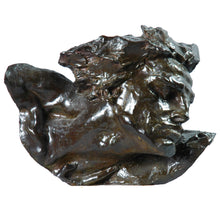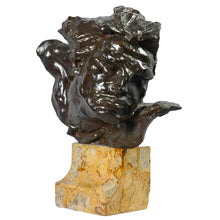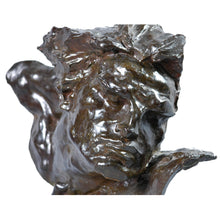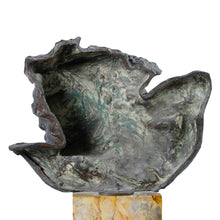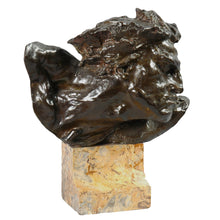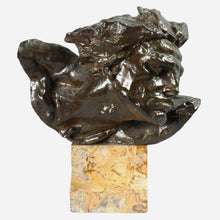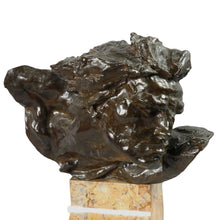
This is a strong Art Deco Bronze Sculpture of the head of a man, titled “The Rhone” by artist André César Vermare, on a giallo reale marble base. France c.1910.
“Le Rhone et la Saone” is a monumental marble sculpture by Vermare that was commissioned by his home city of Lyon, France, depicting the two French rivers that converge in Lyon as male and female figures. This sculpture is situated outside the Palais de Commerce in Lyon. Vermare chose the head of his male figure as the subject for this piece.
Artist/ Maker: André César VermareSignature/ Marks: Vermare and the number 5
Style: Art Deco
Date: 1910
Material: Patinated bronze. Giallo reale marble base
Origin: France.
Condition: Very good condition.
18” tall with marble base
16.5” wide
5.25” deep
André-César Vermare was a French sculptor, born in Lyon in 1869, died Brehat 1949.
Vermare was the son of the sculptor Pierre Vermare. He entered the École nationale des beaux-arts in Lyon in 1886 and studied under Charles Dufraine. In 1891 he moved up to Paris and studied there under Alexandre Falguière, Alfred-Désiré Lanson and Laurent Marqueste. 1892 saw his first submission to the Paris Salon de la Société des artistes français. He was to get an "honourable mention" and then in 1894 he carried off the "Chevavard" prize for his composition entitled Giotto enfant. 1897 saw his Orphée et Eurydice voted the runner-up in that year's Prix de Rome competition and in 1899 his La douleur d'Adam et Eve devant le cadavre d'Abel won that prestigious prize which took him to Rome's Villa Médicis from 1900 to 1903. On returning to Paris he worked with his father and created several statues for churches and as his reputation grew he received numerous commissions and received national recognition. He purchased some land and a farm at Île-de-Bréhat and built a summer house there. For many years he lived in Auteuil before retiring to Bréhat where he died on 7 August 1949.










